Processing Your Payment
Please do not leave this page until complete. This can take a few moments.
- News
-
Editions
View Digital Editions
Biweekly Issues
- December 15, 2025
- December 1, 2025
- Nov. 17, 2025
- November 03, 2025
- October 20, 2025
- October 6, 2025
- + More
Special Editions
- Lists
- Viewpoints
-
Our Events
Event Info
Award Honorees
- Calendar
- Biz Marketplace
Fiber Materials' high end composites can keep you safe as far away as Mars
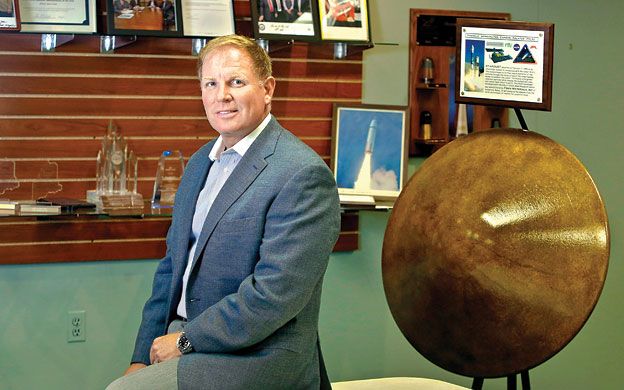 Photo / Tim Greenway
Robert F. Pierson, new president of Fiber Materials Inc., in front of a replica of the Biddeford company's aeroshell heat shield used in NASA's Stardust mission.
Photo / Tim Greenway
Robert F. Pierson, new president of Fiber Materials Inc., in front of a replica of the Biddeford company's aeroshell heat shield used in NASA's Stardust mission.
Buzz Lightyear's energetic cry, “To infinity and beyond,” may not seem so far-fetched after a visit to a Biddeford company. Fiber Materials Inc. is a maker of very high-end composite materials, including for NASA's Orion spacecraft, which later in this decade aims to take humans into deep space, including Mars, and return them safely.
The company, for example, will supply ceramic matrix composite components for the attitude control motor for the Orion Launch Abort System. That will let the crew escape safely in an emergency during launch or ascent. Orion is expected to carry up to four astronauts beyond low Earth orbit on long missions to asteroids and other heavenly bodies, and eventually, Mars.
“The challenges and technology to get to the moon and Mars are different. Mars is much more difficult,” explains Robert F. Pierson, the company's new president, who started in January. “You need new technology.”
FMI, which celebrates its 45th anniversary this year, operates quietly, with typical consumers not seeing its products nor knowing its specialized materials are contained in products used in space science, defense, oil and gas, commercial aerospace and other industries. The oil and gas industry, for example, needs strong materials because its equipment operates at very high pressures and the materials it uses need to be impact-resistant. In space, light weight and high-temperature resistance are key.
“I like working with high temperatures. It's a strong differentiator for our company and is a good product line,” Pierson says. “And we've built strong relationships with our customers.”
He realizes that composites can be an esoteric idea for many. “When people think of composites, they think of panels for cars,” he explains. “But we also make thick composites.” In some cases they measure one foot by one foot and have a long direction. Other composites are made of very high-tech materials that are lighter than existing materials, for example, for use in space, where weight and safety are top-most considerations. Those same considerations come into play with commercial products like hybrid cars and wind turbine blades, which need to be lightweight yet strong.
Pierson is vice president of operations at FMI's parent company, Parma, Ohio-based GrafTech International (NYSE: GTI), and prior to joining FMI served as GrafTech's vice president of enterprise excellence. He says FMI's claim to fame is carbon/carbon, high-temperature composite missile nozzle tips. FMI is moving more into multi-dimensional composites that can be stronger than the carbon/carbon composites.
The company uses its own materials lab to test its products, and it conducts research and development in-house, Pierson explains. The space and defense industries are trending toward more commercial uses of their products. “That play will create more materials' disruption,” he says, referring to the challenges of leapfrogging current technology. “FMI is being proactive to get stickiness with customers and understand their applications.”
Oddly, FMI's biggest customers are also its biggest competitors. Among them are Aerojet Rocketdyne and ATK (which makes competitive materials).
Top-line composites
In buildings surrounded by serene grass, but fenced off so visitors need to check in, FMI makes high-temperature materials, advanced composites, carbon and graphite insulation and carbon/carbon composite products. It also makes quartz-based fiber and fabrics, ablative (protective) coatings and has an independent Energy Materials Testing Laboratory that performs mechanical and thermal testing for advanced materials ranging from minus 200 degrees Fahrenheit to 5,000 degrees above. Many of its products are custom-made.
One product line, a high-temperature insulator for furnaces, can be used as a barrier coating for more years than existing products, says David Loper, director of operations. “In a large, industrial, high-temperature furnace application, insulation needs to be changed out several times a year,” he says, because it gets damaged by the heat. Extending that time even 30 to 60 days can be a significant time and money savings for the customer, he says. “Instead of six months, they're getting eight months, which equals a 25% decrease in operating cost.”
Sometimes FMI's projects and clients are so secretive that FMI itself may not know everything about how its materials are being applied, Loper admits. Visitors to the company's offices are asked to sign a nondisclosure agreement to gain entry to certain parts of the facility. The company has two facilities in Biddeford plus one in Presque Isle that makes multi-directional carbon fiber materials used to construct rocket motor assemblies and specialty fabrics used in ballistic shields, reinforced armor and even recreational vehicles.
One of the few places the average person can see one of its products is at the Smithsonian Air and Space Museum in Washington, D.C. It is an aeroshell, or heat shield, that was used to protect the Stardust system from the intense heat generated during reentry through the Earth's atmosphere, in this case at a speedy 29,000 miles per hour. Stardust was the first U.S. space mission dedicated to bringing back extraterrestrial material from beyond the moon. It was launched in 1999 and returned in 2006.
The company's products also will be used in the Mars 2020 rover. While the first Mars rover roamed around Mars looking for water and stayed on the planet, the Mars 2020 rover will pick up samples and return to Earth with them, says Travis Wood, director of sales and marketing at the company, which in October 2011 became a wholly owned subsidiary of GrafTech.
An ear with the feds
With its high-tech expertise and activities in programs like Orion, FMI also has become a magnet for engineers.
“We have a strong engineering department,” says Loper, with the largest group being mechanical engineers, with some chemical and process engineers as well. He says there's a fairly large population of Maine-based professionals, though they've hired people “from away” as well. One bright spot is the University of Maine graduates among its ranks.
“We're trying to create an environment to grow engineering resources,” he says, “and over the last 10 years we've done a good job to hold talent.”
Wood adds that the company gives young engineers the opportunity to step into a leadership role earlier on in their careers, which he says is an attraction, along with the company's training and investment in new technology for its own use.
FMI had the chance earlier this year to take its jobs message to a broader audience, at the Space Launch System/Orion Suppliers' Conference in Washington.
On March 11 and 12, FMI team members attended the second annual Space Launch System/Orion Suppliers' Conference in Washington, D.C. On the second day of the conference, FMI met with U.S. Sens. Susan Collins and Angus King, and members of U.S. Rep. Chellie Pingree's staff. While more than 45 states are represented by the SLS/Orion suppliers, FMI is the only supplier from Maine. On its website, FMI said the meetings gave them the chance to talk directly with the senators “about the importance of the program's funding in 2015, and how it directly impacts the southern Maine region through employment and economic development.”
Pierson expects to double his staff of 200 over the next five years, and to as much as triple current revenue. He would not reveal current revenues, but Wood says the engineering solutions group that FMI falls within has revenues of $200 million to $250 million, “so we are under that,” Wood says.
Pierson says FMI is the kind of company that is perfect for Maine: it is high tech, uses local resources, offers higher wages, is growing and offers value. “It's a microcosm of what we'd like to see Maine become,” he adds.
Read more
EPA fines Biddeford composites maker for allegedly failing to report toxic compounds
Fiber Materials Inc.
5 Morin St., Biddeford
President: Robert F. Pierson
Products: high-temperature and composite materials
Founded: 1969
Employees: 200 (2 facilities in Biddeford, one in Presque Isle)
Revenues 2013: less than $250 million
Contact: 282-7000
Mainebiz web partners

The Giving Guide
The Giving Guide helps nonprofits have the opportunity to showcase and differentiate their organizations so that businesses better understand how they can contribute to a nonprofit’s mission and work.
Learn More
Work for ME
Work for ME is a workforce development tool to help Maine’s employers target Maine’s emerging workforce. Work for ME highlights each industry, its impact on Maine’s economy, the jobs available to entry-level workers, the training and education needed to get a career started.
Learn More
Groundbreaking Maine
Whether you’re a developer, financer, architect, or industry enthusiast, Groundbreaking Maine is crafted to be your go-to source for valuable insights in Maine’s real estate and construction community.
Learn more-
The Giving Guide
The Giving Guide helps nonprofits have the opportunity to showcase and differentiate their organizations so that businesses better understand how they can contribute to a nonprofit’s mission and work.
-
Work for ME
Work for ME is a workforce development tool to help Maine’s employers target Maine’s emerging workforce. Work for ME highlights each industry, its impact on Maine’s economy, the jobs available to entry-level workers, the training and education needed to get a career started.
-
Groundbreaking Maine
Whether you’re a developer, financer, architect, or industry enthusiast, Groundbreaking Maine is crafted to be your go-to source for valuable insights in Maine’s real estate and construction community.
ABOUT
NEW ENGLAND BUSINESS MEDIA SITES
No articles left
Get access now
In order to use this feature, we need some information from you. You can also login or register for a free account.
By clicking submit you are agreeing to our cookie usage and Privacy Policy
Already have an account? Login
Already have an account? Login
Want to create an account? Register
Get access now
In order to use this feature, we need some information from you. You can also login or register for a free account.
By clicking submit you are agreeing to our cookie usage and Privacy Policy
Already have an account? Login
Already have an account? Login
Want to create an account? Register
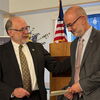
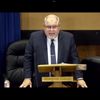

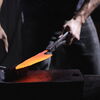

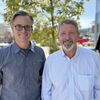

Comments